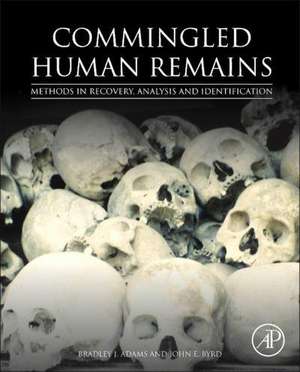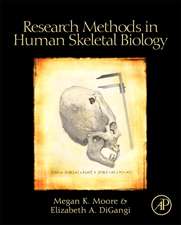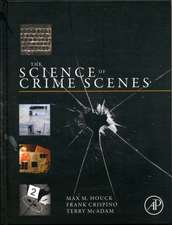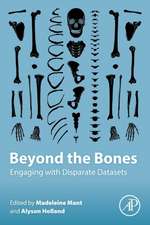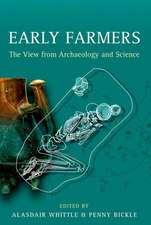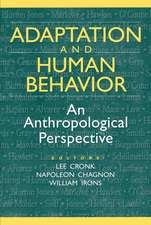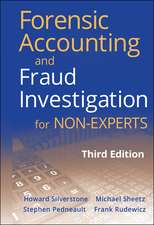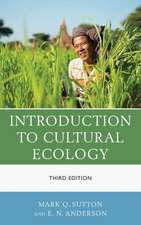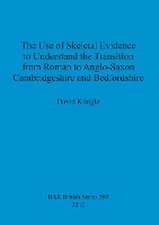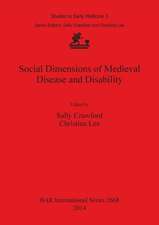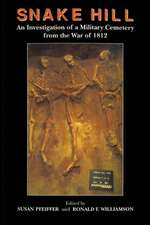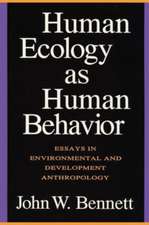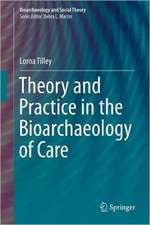Commingled Human Remains: Methods in Recovery, Analysis, and Identification
Autor Bradley Adams, John Byrden Limba Engleză Paperback – 6 iul 2014
- A powerful resource for those working in the forensic sciences who need to plan for and/or address the complex challenges associated with commingled and fragmentary human remains
- Written by an international group of the foremost forensic scientists presenting their research and candid experiences of dealing with commingled human remains, offering recommendations and providing "lessons learned" which can be invaluable to others who find themselves facing similar challenges
- Contains chapters on remains recovery, laboratory analysis, case studies, and broader topics such as mass fatality management and ethical considerations
Preț: 320.53 lei
Preț vechi: 430.38 lei
-26% Nou
Puncte Express: 481
Preț estimativ în valută:
61.34€ • 64.50$ • 50.68£
61.34€ • 64.50$ • 50.68£
Carte tipărită la comandă
Livrare economică 10-24 aprilie
Preluare comenzi: 021 569.72.76
Specificații
ISBN-13: 9780124058897
ISBN-10: 0124058892
Pagini: 544
Dimensiuni: 191 x 235 x 28 mm
Greutate: 1.11 kg
Editura: ELSEVIER SCIENCE
ISBN-10: 0124058892
Pagini: 544
Dimensiuni: 191 x 235 x 28 mm
Greutate: 1.11 kg
Editura: ELSEVIER SCIENCE
Public țintă
Forensic anthropologists, forensic scientists, medical examiners, coroners, first responders, paleontologists, archaeologists, osteologists, forensic professionals in law enforcement and academia, students in biological, biophysical, biomedical and paleontological sciences.Cuprins
1: Commingling Analysis: Historical and Methodological Perspectives2: Spatial Analysis of Mass Grave Mapping Data to Assist in the Reassociation of Disarticulated and Commingled Human Remains3: Recovery Methods for Cremated Commingled Remains: Analysis and Interpretation of Small Fragments Using a Bioarchaeological Approach4: More Pieces of the Puzzle: F.B.I. Evidence Response Team Approaches to Scenes with Commingled Evidence5: The Use of Radiology in Mass Fatality Events6: A Practical Method for Detecting Commingled Remains Using Epiphyseal Union7: Application of Portable X-ray Fluorescence (XRF) for Sorting Commingled Human Remains8: Osteometric Sorting9: Estimating the Number of Individuals Represented by Commingled Human Remains: A Critical Evaluation of Methods10: Assessment of Commingled Human Remains Using a GIS-Based and Osteological Landmark Approach11: Human Cremation: Commingled and Questioned Identity 12: Marrying Anthropology and DNA: Essentials for Solving Complex Commingling Problems in Cases of Extreme Fragmentation13: Prioritized Sampling of Bone and Teeth for DNA Analysis in Commingled Cases14: A Multidisciplinary Approach to Commingled Remains Analysis: Anthropology, Genetics and Background Information15: Blast and Crash Incidents: Resolving Commingling at the Armed Forces Medical Examiner System16: Forensic Investigation of Suicidal Bombings in Israel: Balancing Religious Considerations with Medicological Responsibilities17: Anthropologist-Directed Triage: Three Distinct Mass Fatality Events Involving Fragmentation and Commingling of Human Remains18: Recovery and Identification of Victims of the Colgan Air Flight 3407 Crash19: The Korea 208: A Large-Scale Commingling Case of American Remains from the Korean War20: Data Management and Commingled Remains 21: Resolving Commingling Issues During the Medicological Investigation of Mass Fatality Incidents22: Mass Fatality Management and the Effects of Commingling23: The Social Complexities of Commingled Remains
Recenzii
"Commingling of bones and other body parts is a major obstacle to individual identification that must be addressed before other forensic determinations or research can proceed. This edition focuses on forensic situations, although some examples from prehistoric contexts are addressed." --EvidenceMagazine.com, Sep-Oct 2014
